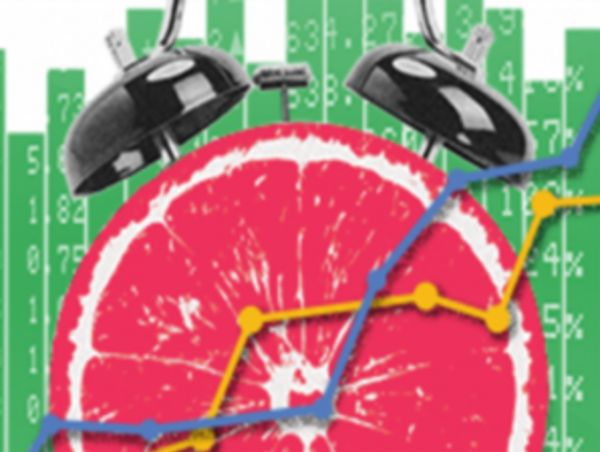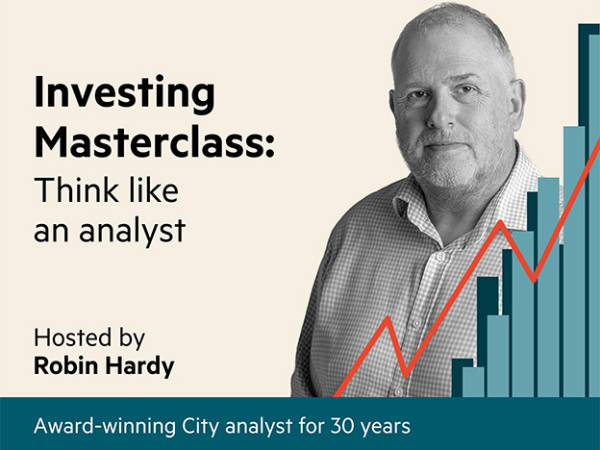At this time of year my fellow scribes are invariably drawn to creating lists of recommended reading material for summer holidays. One can be sure that a steady stream of silly novels, boring biographies and turgid finance texts will feature. Bloomberg started in early June and the FT late in the month with a four-and-a-half-page selection. Maybe I’ll pack that and ditch the books! As my friend the Supreme Court judge who, like me, has to read an awful lot for work, says: “Reading for pleasure becomes a little more difficult every year. Or are we more demanding?”
With this in mind, and following many requests from those wanting to learn more about technical analysis, I’ve compiled a list of books on this subject aimed at beginners – and which are also a good read. Choose one and see how you get on. If nothing else it’ll give you a handle on the subject, might make you a better trader, and eventually line your pockets more thickly.
Rather than my thoughts on the subject I’ve enlisted committee members of the UK’s Society of Technical Analysts (STA), a not-for-profit organisation that next year celebrates 50 years since incorporation – with a party at City Hall by Tower Bridge. I’ve also got some of the biggest names in the business to give me a couple of suggestions apiece.
Here goes, starting off with Axel Rudolf, current chairman of the society and multi-lingual German banker. Being an efficient chap he emailed his reply in first, thereby bagging a book that many others would also have suggested: Reminiscences of a Stock Operator, the story of Jesse Livermore by Edwin Lefèvre. First published in 1923, my money broker gave me a copy 30 years ago and I’ve re-read it several times. As Axel notes: “It has many insights into trading, life, and psychology which are as relevant today as they were when the book was written.” Another member pointed out that its other advantage is that it’s a small, short book and therefore easy to pack. Axel’s second choice is: Trader Vic – Methods of a Wall Street Master by Victor Sperandeo because “his set-ups, such as a false breakout, can still be profitably traded today’.
Adam Sorab, past STA chairman and global multi asset manager at CQS, said: “Personally, my first recommendation would be Behavioural Investing: A Practitioners Guide to Applying Behavioural Finance by James Montier. The reason is that while many books do a good job of teaching technical analysis techniques, few books do such a good job of teaching one about the very real neurological and psychological barriers to investment success. James’s book brings together a lot of solid academic research and pulls the lid on many investment myths. I think it’s essential reading for anyone who is ever going to try to make money by investing in markets.
“If I had to give a second recommendation it would be Thomas Cleary’s translation of Art of War by Sun Tzu. It’s a very accessible version of this essential ancient Chinese military strategy text. Art of War is a 2,500-year-old piece of writing that still has a huge amount to teach us about coping with conflict and opportunity in today’s world.”
James Cameron, who is responsible for much of the syllabus and exam format of the STA Diploma Course, likes Getting started in Technical Analysis by Jack D Schwager where “his purpose is to avoid a textbook approach and show technical analysis as essentially practical, something he achieves brilliantly”. You may have heard of his best-selling Market Wizard series. His second choice is also Trader Vic because “it’s a fascinating biographical, forthright, entertaining and enjoyable read” living up to the foreword which claims this book [is] “valuable to everyone, regardless of their level of interest or expertise in the stock or commodity markets”.
Luise Kliem, who currently sets the STA exams and developed the home study modules, recommends Marber on Markets by City legend and my guru Brian Marber, adding: “It’s very informative with a practical approach that all investors (particularly private investors) will welcome – and it’s so utterly irreverent and entertaining that I forgive him for pooh-poohing Fibonacci.” Her second choice, Candlestick Charts by Clive Lambert, does what it says on the tin: written in a “clear, informal and engaging style that quickly gives the reader a grasp of what’s important”.
Treasurer Simon Warren, ex fund manager at health insurer Bupa, proffered these little gems. Motley Fool: Make your Child a Millionaire “because it’s small and light to travel with, it’s very cheap, it explains to the novice investor that you have to get saving early as compounding is key. Because it also shows people they should be doing important things like having a will”. He adds another two, The Trading Athlete by sports psychologist Shane Murphy and trader Doug Hirschhorn and Market Wizards (again), which is available as an audiobook (handy if you want to zone out from the family!)
STA fellow Mark Tennyson-d’Eyncourt said: “I have a nasty feeling that my recommendations don’t fit your criteria, but here goes: Charters on Charting by David Charters, but it might be out of print.” Then The Great Crash of 1929 by JK Galbraith, which became almost mandatory reading in dealing rooms in 2007 and 2008. He also suggests Adam Smith’s Money Game and Beginners Please, a 1975 edition of extracts from Investors Chronicle “where the technical analysis chapter also acts as a primer and where the charts show the major tops in 1972 and the declines through to 1974. A real bear market! This should be required reading for younger analysts”.
Charles Newsome, divisional director at Investec Wealth & Investment (who moonlights as vice-chairman of the STA) was succinct. Steve Jobs by Walter Isaacson. “OK, it’s a biography but I think it’s a must read and gives an insight into this brilliant man”. The Outsiders by William Thorndyke, which is “the story of eight unconventional outsiders who thought differently about capital allocation”.
Clive Lambert, whose candlestick book was chosen earlier, now pops up in his guise as part of the STA marketing team. Two of his three choices were picked earlier, but his third more than makes up for this, Extraordinary Popular Delusions and the Madness of Crowds by Charles Mackay. “It amazes me how often ‘investors’ forget about bubbles, and this is a cracking read that serves as a great reminder to anyone who is thinking about piling into Bitcoin right now… for example!”
Trading systems consultant David Watts likes Secrets for Profiting in Bull and Bear Markets by Stan Weinstein, “the most lucid book on the use of moving averages”. Then Technical Analysis of Stock Market Profits: A Course in Forecasting by Richard Schabacker, “the first real bible of technical analysis”. I would agree here, adding that my first primer was Edwards & McGee’s Technical Analysis of Stock Trends, which interestingly focuses on commodity futures markets as these were then at the forefront of investment thinking.
Youthful hedge fund manager Tom Hicks says he’d have to go for Reminiscences (yes, yet another plug for this delightful little book) and – toe-curlingly – Ichimoku Charts: An Introduction to Ichimoku Kinko Clouds by Nicole Elliott. Yes, yours truly’s “was the book that got me into trading using Ichimoku techniques” and which Luise liked for its writing style.
Company secretary and veteran fellow of the society Anne Whitby says: “I’m afraid I have no books to recommend. I’ve only ever read one (because I had to proofread it) by Ellie Gifford and it’s now out of print.” This reminds me of one of my fellow bank trading colleagues who insisted on working from home saying he wanted to keep away from the chatter and noise of the markets.
For those interested in commodity markets I’ve roped in ex-head of risk management at United Biscuits, Brenda Sullivan. She says: Economics of Futures Trading by Thomas Hieronymus is a classic. “This book makes accessible the relationship between futures and the cash or physical markets. These concepts underpin all asset classes and price movements.” Then another gem, Peter Steidlmayer’s New Market Discoveries just one of which was the Market Profile technique. “This method put order into markets before we had digitalisation and this method of arranging data links to geometry and the statistical concept of standard deviations.”
Book reviewer, technical analyst and private trader Simon Gray likes Alexander Elder’s The New Trading for a Living where “its strengths are market psychology, risk control and account management”. As an alternative to Schabacker is John Burford’s Tramline Trading – A Practical Guide to Swing Trading with Tramlines, Elliott Wave and Fibonacci Levels. Quite a mouthful, a new one on me, published by Harriman House in 2014.
Which segues neatly on to Stephen Eckett’s choices, he who set up Harriman House in the early 1990s, which is now the UK’s leading publisher of books on finance, investment and trading. Stephen picks A Beginner’s Guide to Charting Financial Markets by Michael Kahn. He says: “This book gives the basics; it covers only the nuts and bolts of chart analysis leaving the whiz-bang stuff well alone.”. His second choice is Clive Lambert’s book, so I’ll give you his third, Eoin Treacy’s Crowd Money where “at its heart is the application of insights into crowd psychology. The author’s approach to measuring the rhythm of the market has been the secret weapon of alpha generators for decades”.
I’ve kept the best until last. A hero of mine, the man who single-handedly revived Elliott Wave theory, and the maverick who likes combining all sorts of areas of thinking – call him Renaissance man – Robert Prechter. As he bills his firm ‘World-Class Market Analysis since 1979’ he too likes the Popular Delusions book. His other choice is too cheeky to be true: penned by his very own hand and published this year The Socionomic Theory of Finance. Trying to piece together psychology and herding tendencies, mood, linear extrapolation versus bubbles, scepticism and economics, this I think is an 813-page brain teaser. “I wouldn’t call it beach fare, but I think it’s fun!” It’s packed in my case for an imminent trip to the Italian Lakes. Thanks Bob.









